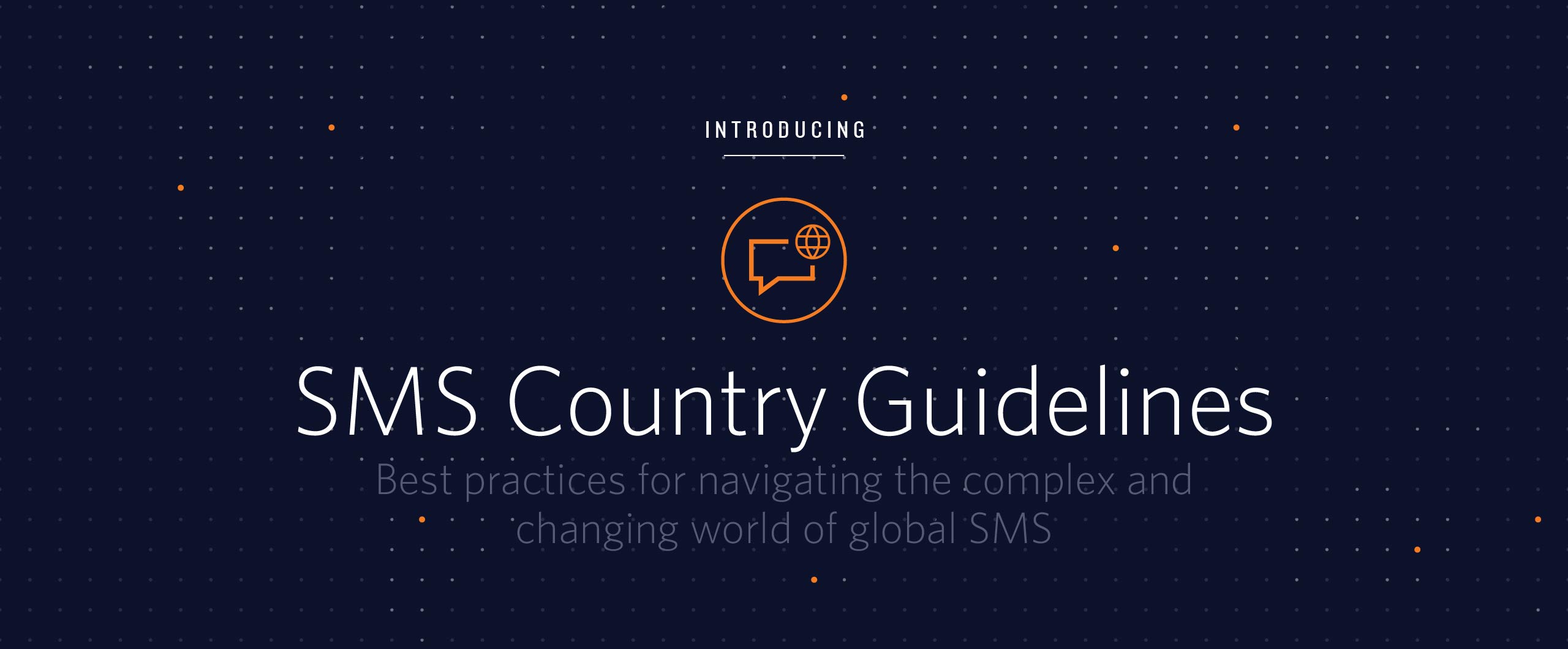Introducing Country-Specific Guidelines for Using SMS around the globe
Time to read: 2 minutes

Today, we’re excited to introduce global SMS guidelines. It’s an online resource that spells out the different rules and best practices for using SMS in 222 countries and territories around the world. It’s available today on our website.
While sending an SMS to someone in another country seems pretty straightforward, navigating the intricacies of global SMS is actually quite tricky. For starters, different countries and carriers have different definitions of what acceptable use is, whether for sending promotional messages or for setting opt-in policies. That’s why sending or receiving SMS in India or Japan is different than in the US for example. There are also some technical differences in how SMS is handled by different mobile carriers around the globe. Some limit how you can concatenate long messages and others limit if you can send pictures or not… And on and on it goes.
The risk of missing something is real, not to mention a bit scary. It can result in garbled and dropped messages to your customers. Or worse – getting blocked by a carrier.
This is where global SMS guidelines comes in. It gives you an online resource with information on everything from local phone number capabilities to carrier restrictions that lead to filtering.
There are a few important advantages to having this information:
1) Use numbers that maximize deliverability
Many countries have very specific guidance for each type of phone number when it’s used as the source of your SMS. If you use the wrong type, they drop your messages or shut you down entirely. As an example, in some countries, phone numbers must be pre-registered to send two-factor authentication codes. Twilio now gives you detailed information about phone numbers and sender IDs available in each country, so you can avoid dreaded carrier filtering.
2) Keep messages readable
Different mobile carriers encode and concatenate your messages in different ways. Most of the time you don’t need to be bothered with this information. Twilio does a lot of work behind the scenes to reformat and optimize the message body based on the destination. But in some countries, carriers flat out don’t support concatenation of messages. It’s this kind of local knowledge that can help you structure the messages you send to ensure they don’t arrive garbled or out of order.
3) Follow local carrier guidelines
Different countries have different sets of guidelines for the use of SMS. It might be how you handle opt-outs, or what time of day you can send marketing messages, or what types of messages are permitted over different types of senders. For instance, when sending to India, you can only send marketing messages from Mon-Fri during business hours. In addition, in certain countries, local long numbers are only designated for peer-to-peer (P2P) traffic, while application-to-peer (A2P) traffic must be sent using a short code or alphanumeric sender ID. Twilio gives you this kind of information, so you have better awareness of local guidelines and can adjust your SMS workflow to ensure the best possible delivery.
These country-specific guidelines are available today and we’ll continue to update and add more information over time. If you send or receive SMS from multiple countries, chances are you’ll want to keep this resource bookmarked.
Get started here.
We can’t wait to see what you build!
Related Posts
Related Resources
Twilio Docs
From APIs to SDKs to sample apps
API reference documentation, SDKs, helper libraries, quickstarts, and tutorials for your language and platform.
Resource Center
The latest ebooks, industry reports, and webinars
Learn from customer engagement experts to improve your own communication.
Ahoy
Twilio's developer community hub
Best practices, code samples, and inspiration to build communications and digital engagement experiences.


